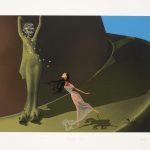Behind the Artist: Thomas Kinkade
Thomas Kinkade, Painter of Light
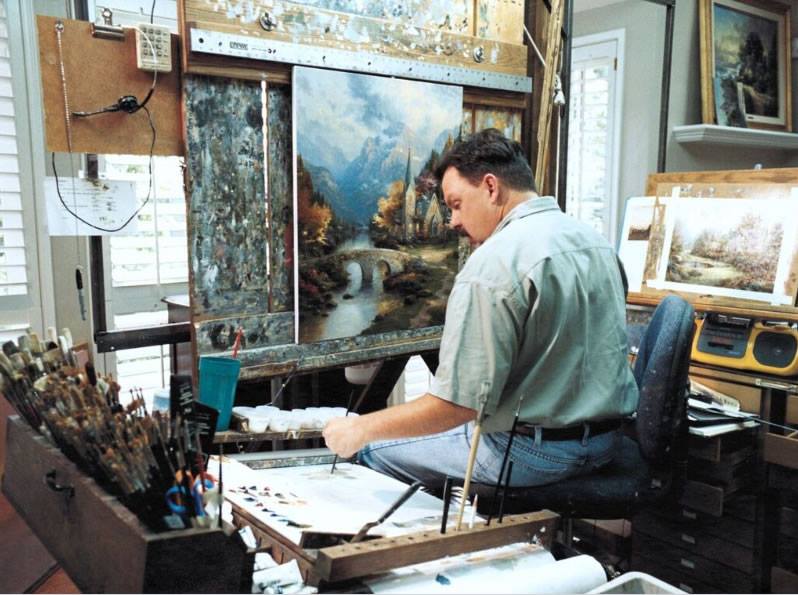
Thomas Kinkade
Few contemporary artists are as ubiquitous as Thomas Kinkade, whose luminous imagery adorns more than 10 million homes worldwide.
Born in Sacramento County, California on January 19, 1958, Kinkade knew from an early age that he would become an artist. He grew up in the town of Placerville, where at the age of 12 artist Glenn Wessels began mentoring Kinkade.
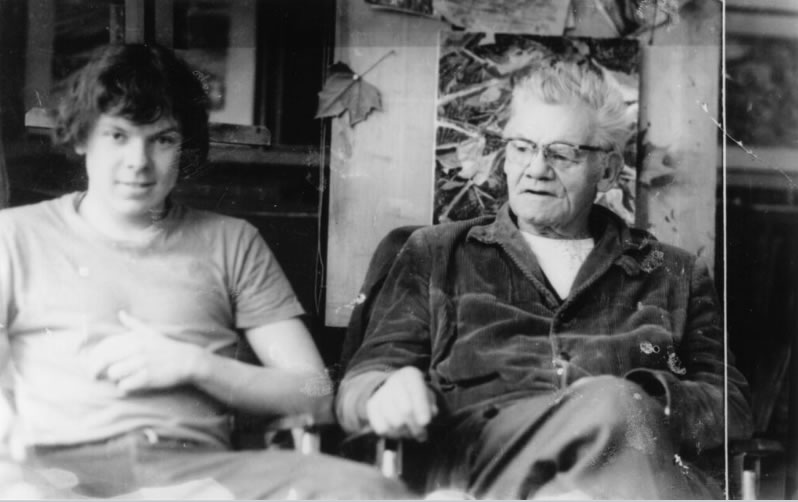
A teenage Thomas Kinkade with his mentor, Glenn Wessels (Photo courtesy of Art Brand)
Kinkade attended the University of California at Berkeley in 1976 and later transferred to the Art Center College of Design in Pasadena, California. Despite not graduating from either school, Kinkade still found work in the art industry—he co-authored a book about drawing and worked as a scenic background artist for a movie studio.
Inspired by the skills he developed as a background artist, Kinkade began exploring the use of light in his own artwork. This led to the development of the signature Kinkade style collectors have come to love: Idyllic depictions of cottages, gardens, streetscapes, and churches infused with whimsical pastels and an ethereal sense of light.

“Mountain Majesty (Large)” (1998), Thomas Kinkade
Kinkade went on to paint more than 1,000 works of art during his lifetime and industriously created limited editions of his paintings. He has been featured in more than 120 books, writing and publishing several of his own.
Kinkade died unexpectedly at the age of 54 in 2012 and continues to be admired around the world.
Becoming the Painter of Light
In the 1980s, Kinkade gave himself the moniker “Painter of Light,” symbolizing not only his technical understanding of light, but also a set of spiritual motifs in his work.
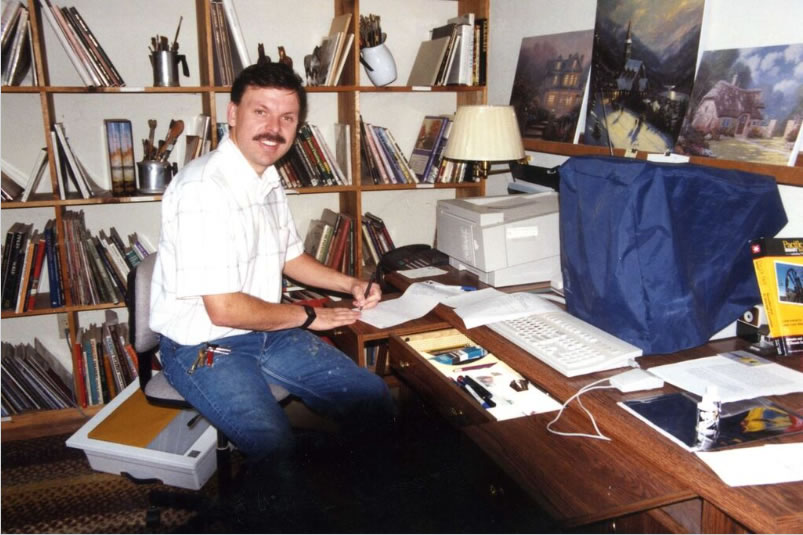
A younger Thomas Kinkade in his office (Photo courtesy of Art Brand)
For example, the light emerging from his homes represents family values, while the overall presence of light in his paintings symbolizes God’s guiding influence. Even the light posts found in his paintings represent the need for all of us to “share the light” and to be welcoming to friends and loved ones.
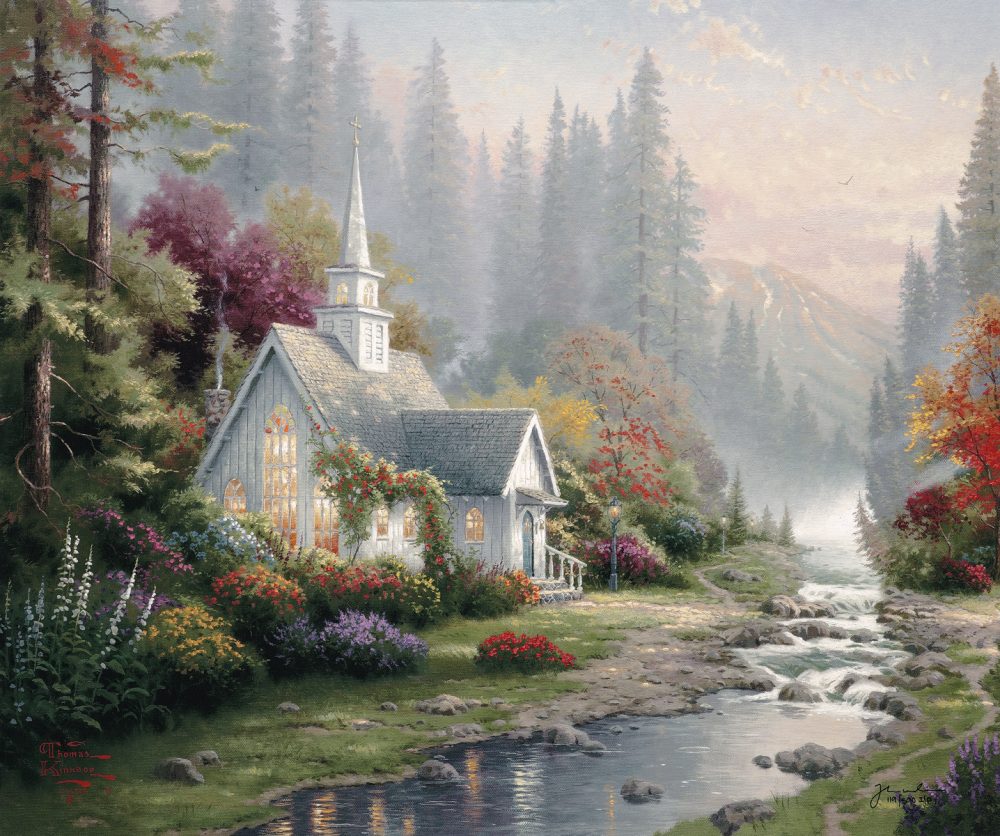
“Forest Chapel” (1998), Thomas Kinkade
The “Painter of Light” nickname (which Kinkade trademarked) went beyond his paintings. In 1980, Kinkade became a born-again Christian and attributed God as a source of inspiration for his work. He proclaimed that his goal as a self-described “warrior for light” was to bring light to all people, regardless of their faith or creed.
Ironically, Kinkade would begin his famous “light” paintings by coating canvases with layers of dark glaze. Kinkade’s rationale was that “because of the darkness, the light I add has more impact.”
Honoring His Family
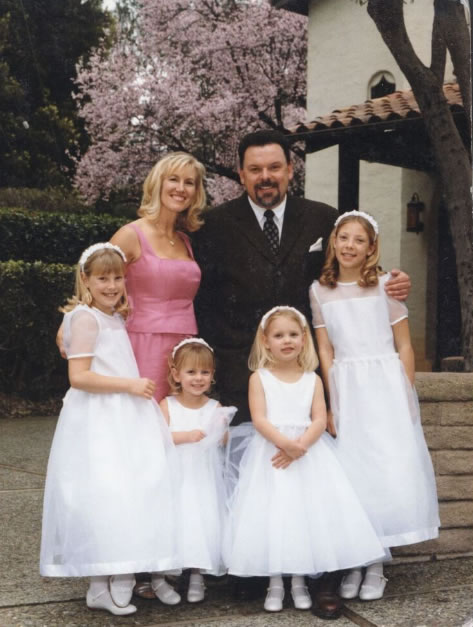
Thomas and Nanette Kinkade with their four daughters (Photo courtesy of Art Brand)
Kinkade emphasized the simple pleasures of life in his artwork, which included devotion to his family. The artist often hid the letter ‘N’ in his paintings in honor of his wife, Nanette, as well as the number 5282 as a tribute to their wedding date of May 2, 1982.
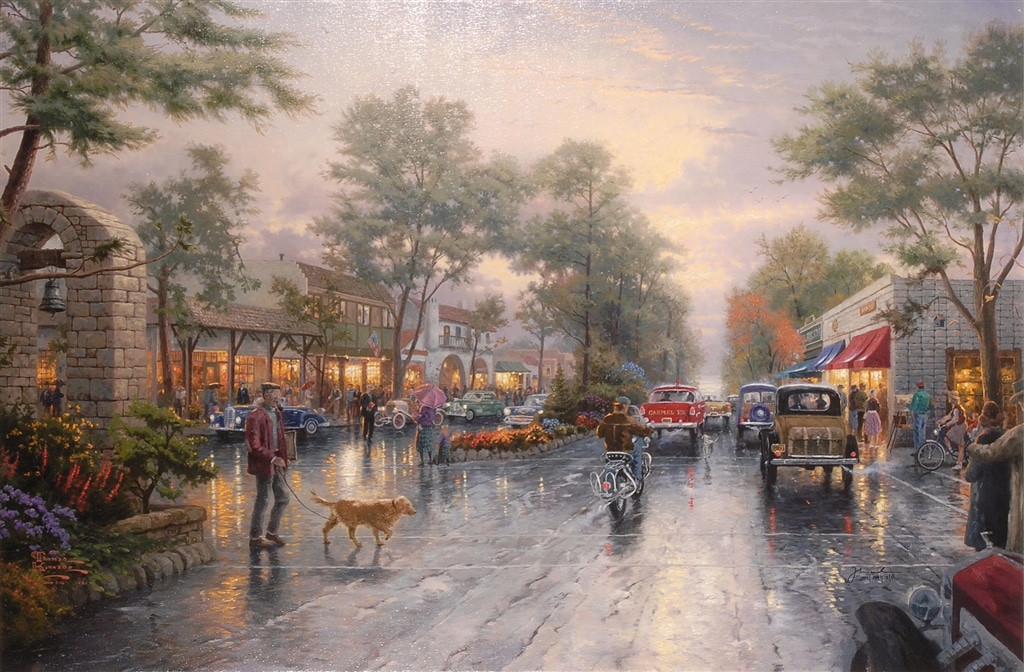
“Carmel Sunset on Ocean Avenue” (1999), Thomas Kinkade
For instance, examine his painting “Carmel Sunset on Ocean Avenue.” If one looks closely on the left side of the painting, a heart with the letter ‘N’ is carved into the wood just above the bell.
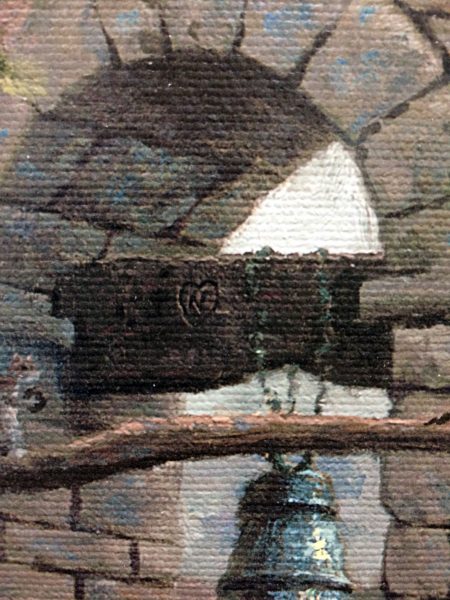
Detail from “Carmel Sunset on Ocean Avenue” (1999)
Kinkade’s penchant for weaving his love for his family into his art extended to his children. Following the birth of each of his four daughters, Kinkade created a painting bearing that daughter’s name. These paintings are “Evening at Merritt’s Cottage,” “Chandler’s Cottage,” “Winsor Manor,” and “Everett’s Cottage.”
Winning Awards and Commissions Around the World
Due to his immense success, Kinkade became a popular artist who was sought after for many important commissions. Kinkade created artwork for Disneyland’s 50th Anniversary, the 50th anniversary of Daytona 500, and Yankee Stadium’s farewell 85th season, among many others.
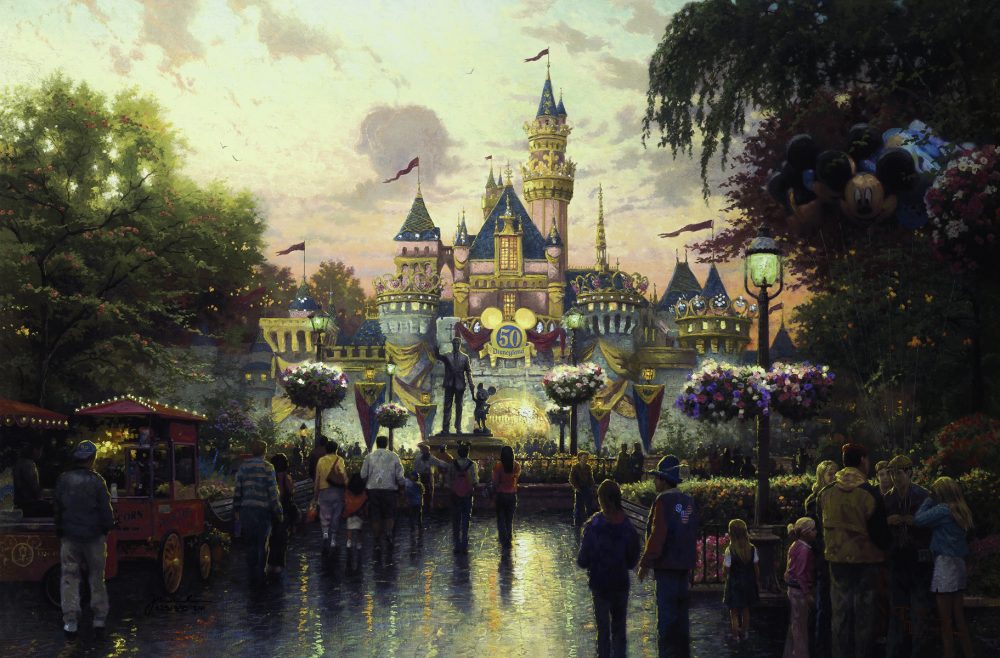
“Disneyland’s 50th Anniversary” (2005), Thomas Kinkade
The artist also painted the National Christmas Tree in Washington, D.C. twice. The first time was in 2000 and the second in 2004 for the annual Pageant of Peace.
The National Association of Limited Edition Dealers recognized Kinkade’s limited edition work with numerous awards over the years. In 2004, the association awarded Kinkade as the “Most Award Winning Artist in the Past 25 Years.”
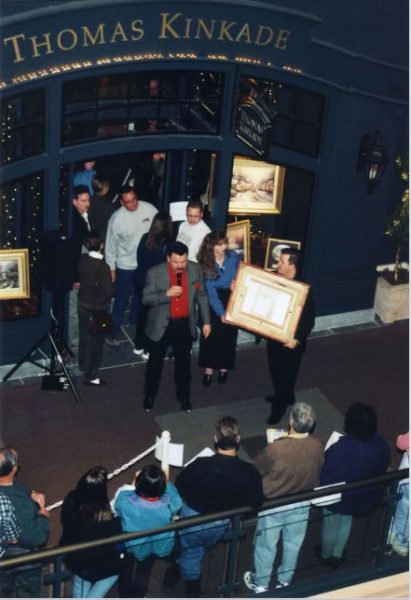
Thomas Kinkade at a gallery event (Photo courtesy of Art Brand)
Two years prior, the California Tourism Hall of Fame inducted Kinkade for his efforts to highlight the beauty of his home state.
Despite his success, Kinkade’s mission was simple: He wanted to make people happy. To this end, Kinkade succeeded. His artwork is still enjoyed and collected to this day for its aesthetic beauty and hopeful message.
For information on how to collect the art of Thomas Kinkade, contact our gallery consultants at (800) 521-9654 ext. 4 or sales@parkwestgallery.com.




